10 Historic Flintlock Pistols That Changed Weapon Design
Flintlock pistols played a crucial role in shaping firearm design throughout history. These early pistols were not just tools of war but also symbols of innovation and craftsmanship. From military revolutions to personal defense, they paved the way for modern handguns. Many historic flintlock pistols introduced unique features that still influence firearm designs today. Each of these models left its mark on history, with lasting effects on firearm evolution.
This post may contain affiliate links, which helps keep this content free. Please read our disclosure for more info.
Pistolet modèle 1733
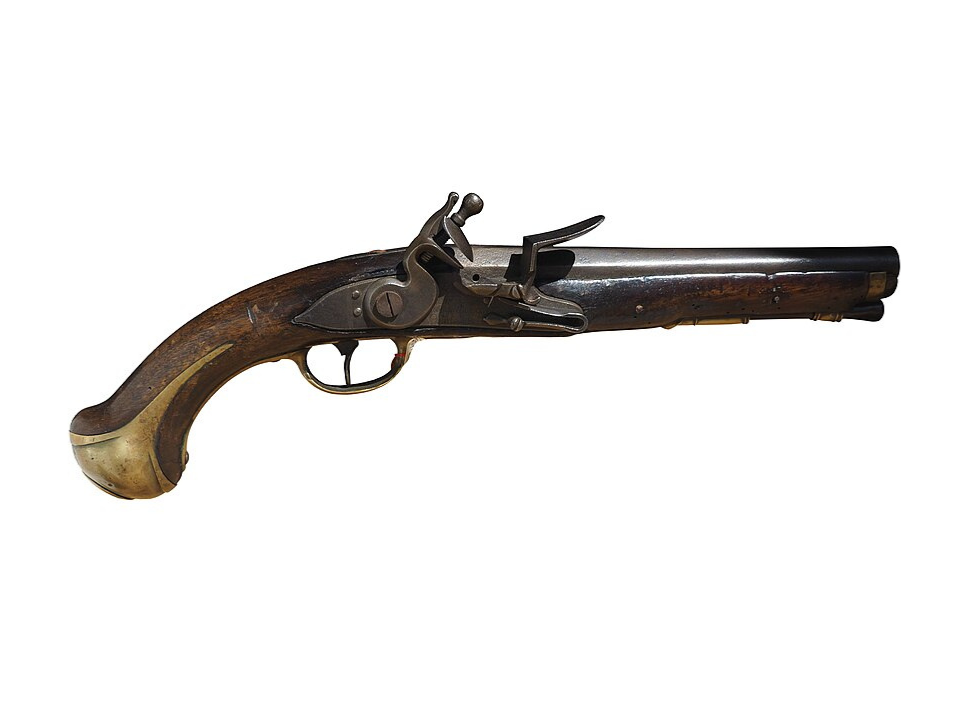
Introduced in 1733, the Pistolet modèle 1733 was the first standardized flintlock pistol adopted by the French military. It was primarily issued to cavalry units, including cuirassiers, hussars, and uhlans, as well as naval and infantry officers. This model marked a significant shift towards uniformity in French military armament.
The pistol featured a 0.69-inch caliber barrel and utilized a flintlock mechanism. Its design was influenced by the musket patterns of the same era, sharing similar calibers and elements. The modèle 1733 set a precedent for future French military pistols, leading to the development of subsequent models like the 1763 and 1766.
Estimated Market Value: $1,500
Pistolet modèle 1763
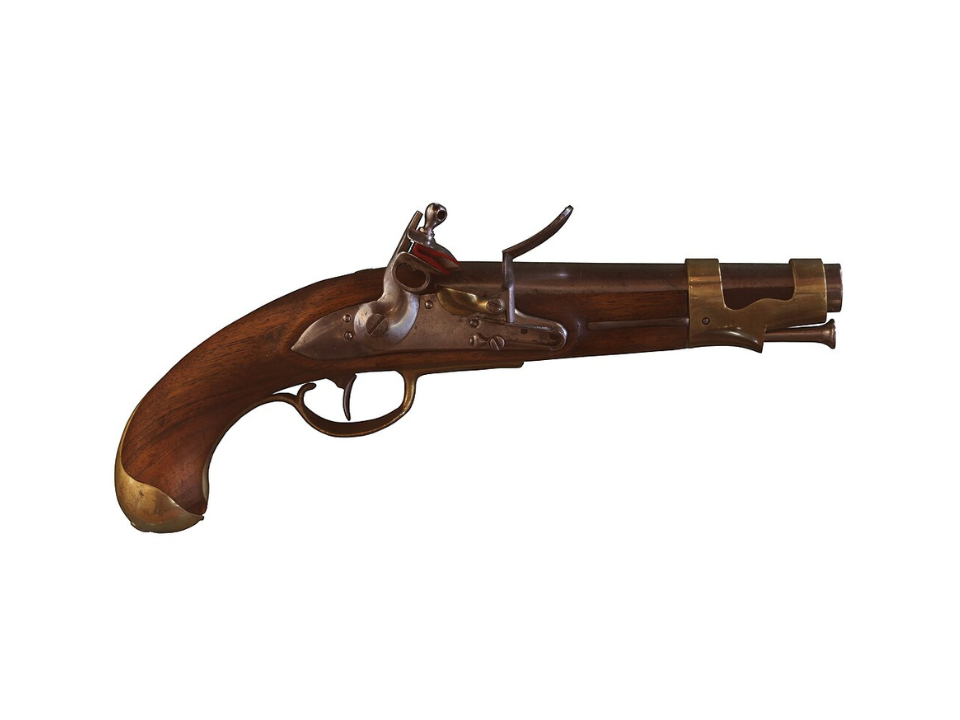
The Pistolet modèle 1763 was an evolution of the modèle 1733, incorporating improvements based on feedback from military use. One notable enhancement was the introduction of a spring-based barrel band system, similar to that used in the modèle 1763 musket. This innovation facilitated easier disassembly and maintenance, addressing some of the practical challenges faced by soldiers.
The modèle 1763 maintained the ‘.69-inch caliber and flintlock mechanism of its predecessor. Its design continued to reflect the standardized approach of the French military, ensuring consistency across different weapon types. This model remained in service until the introduction of the modèle 18’1.
Estimated Market Value: $2,000
Pistolet modèle 1786
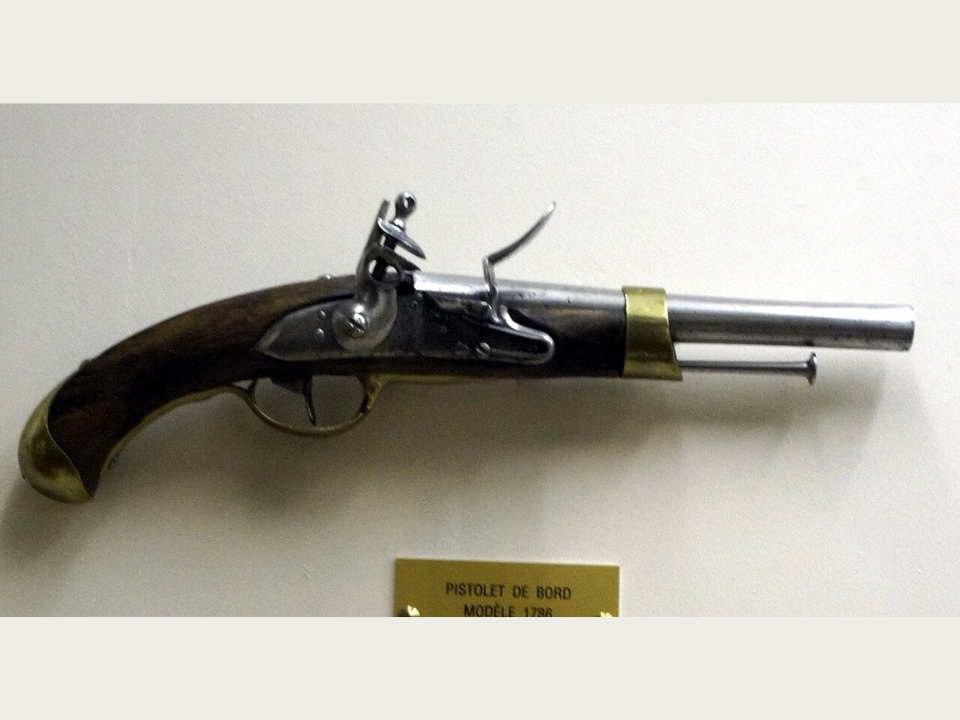
The Pistolet modèle 1786 was introduced during a period of significant change in France. It was part of an effort to modernize and standardize military equipment in response to evolving needs. This model incorporated design elements from earlier pistols but also included new features aimed at improving performance and ease of use.
Despite these advancements, the modèle 1786 faced challenges in adoption. Feedback from soldiers indicated that it did not fully meet their expectations, leading to its eventual replacement by later models. However, it represents an important step in the evolution of French military pistols.
Estimated Market Value: $1,800
Pistolet modèle 1801 (An IX)
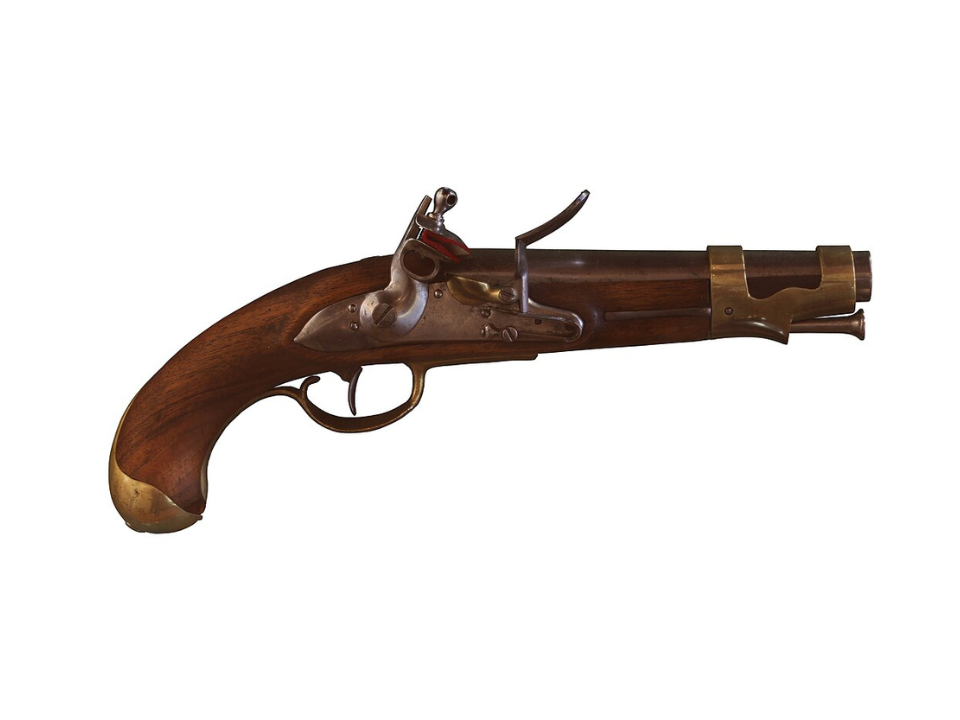
The Pistolet modèle 1801, also known as the An IX, was a significant development in French military pistols. It was designed to equip mounted units, with each cavalry soldier carrying two pistols. The modèle 1801 featured a 0.69-inch caliber barrel and a flintlock mechanism, continuing the tradition of earlier models.
One of the key innovations of the modèle 1801 was its improved barrel band system, which made disassembly and maintenance more straightforward. This model saw widespread use during the Napoleonic Wars and remained in service until it was eventually converted to a percussion lock system in the 1840s.
Estimated Market Value: $2,200
The Duellist’s Flintlock Pistol (Early 1800s)
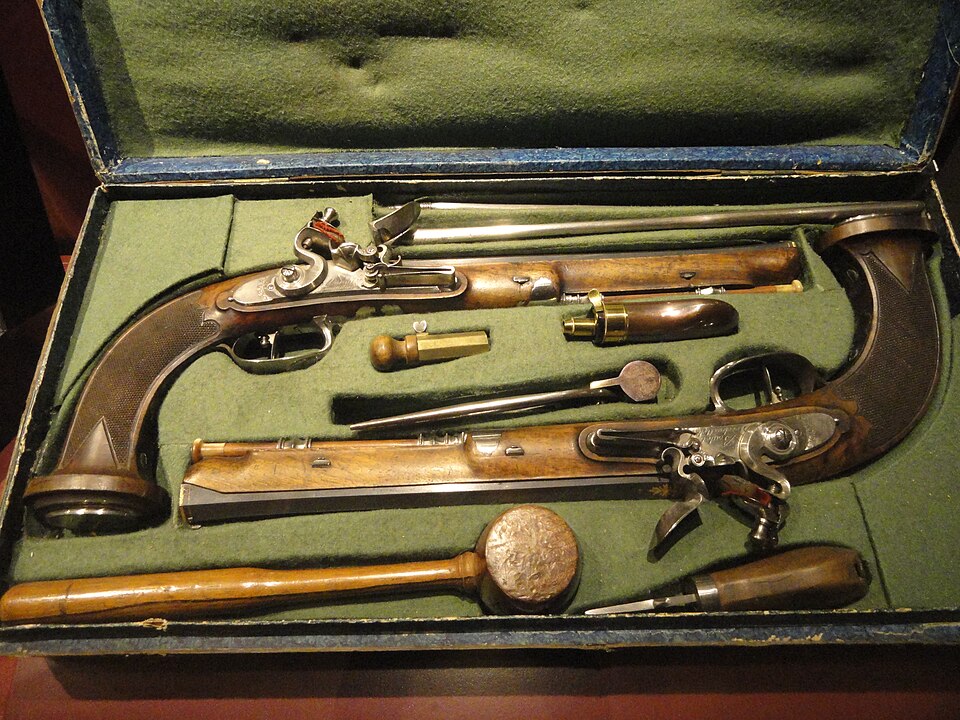
The Duellist’s flintlock pistol was specifically designed for duels, where accuracy and quick firing were essential. These pistols were often finely crafted with elegant designs, featuring smooth mechanisms that could deliver a precise shot at close range. A matching pair of these pistols was often carried by duelists, ensuring fairness and consistency.
Duellist’s pistols were not just weapons; they were symbols of personal honor, used by aristocrats and military officers in the 18th and 19th centuries. While these pistols were not widely used outside of duels, they remain highly valued by collectors for their craftsmanship and historical significance in the practice of dueling.
Estimated Market Value: $8,000
The Tower Flintlock Pistol (1690s)
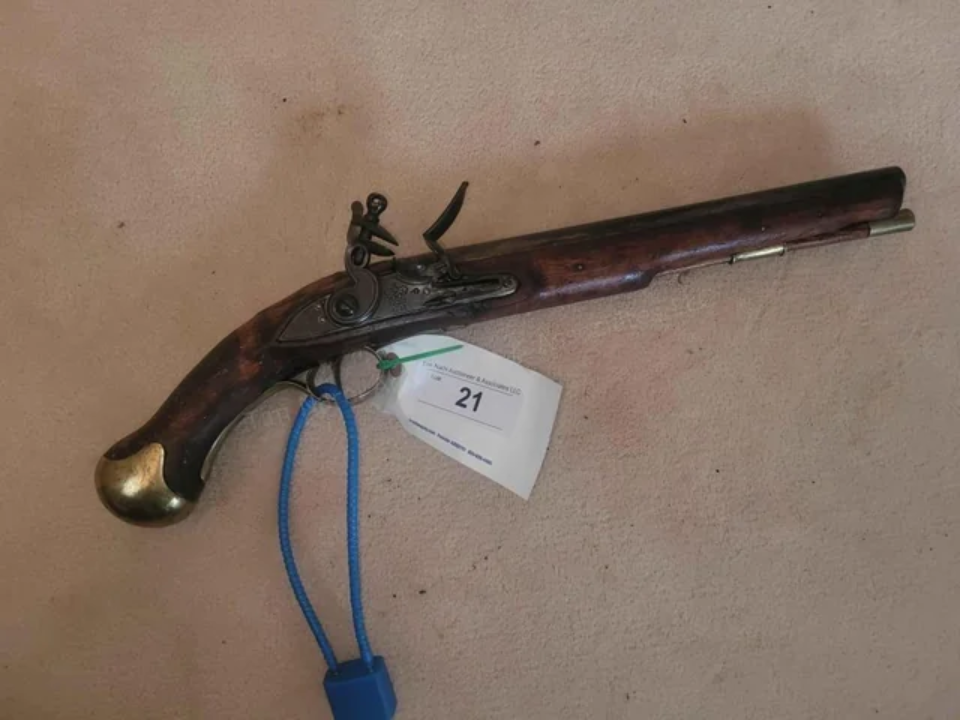
The Tower flintlock pistol was produced in England during the late 17th century and was standard issue for British soldiers. It marked a significant step forward in military firearm design, moving away from the cumbersome matchlocks that had previously been used. The Tower pistol’s flintlock mechanism was reliable and simple, making it a practical sidearm for soldiers.
Its use in both military and civilian settings cemented its place in British history. The Tower flintlock’s design influenced many subsequent British pistols, particularly in terms of the flintlock ignition system. Today, these pistols are highly collectible due to their historical relevance and their role in shaping military weaponry.
Estimated Market Value: $3,500
Catherine the Great Flintlock Pistol
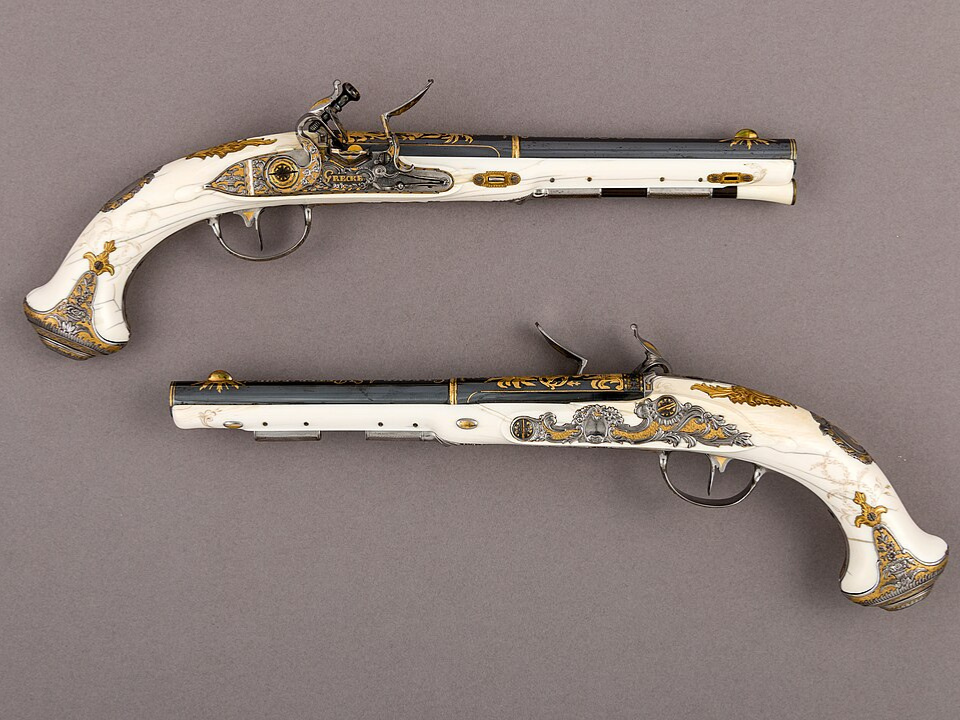
The Catherine the Great Flintlock Pistol is a beautifully crafted firearm that belonged to the Russian empress Catherine the Great. It features exquisite detailing, including ornate engravings and a design that reflects the grandeur of Russian nobility during the 18th century. These pistols were not only weapons but also symbols of imperial power.
Catherine the Great was known for her significant role in Russian politics, and this pistol was a part of her personal armory. The craftsmanship and materials used in the pistol reflect the high status of its owner. Today, these pistols are rare and highly sought after by collectors for their historical connection to one of the most powerful women in European history.
Estimated Market Value: $15,000
Queen Anne Flintlock Pistol
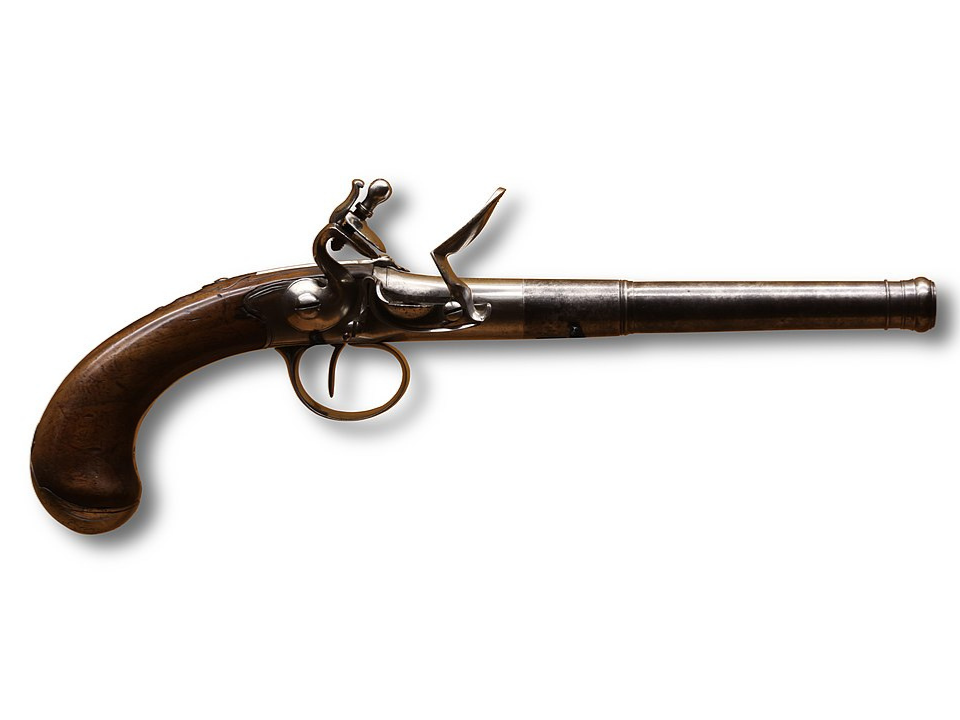
The Queen Anne Flintlock Pistol is an elegant firearm from the early 18th century, often associated with British aristocracy. This pistol features a distinctive design, often adorned with intricate engravings and high-quality wood, making it both a weapon and a decorative piece. It is named after Queen Anne, who reigned over Britain from 1702 to 1714.
This pistol is known for its precision and aesthetic appeal. It was commonly carried by officers and nobility during its time, symbolizing their high rank and wealth. Today, Queen Anne Flintlock Pistols are prized by collectors for their historical significance and fine craftsmanship.
Estimated Market Value: $7,000
Harper’s Ferry Model 1805 Flintlock Pistol
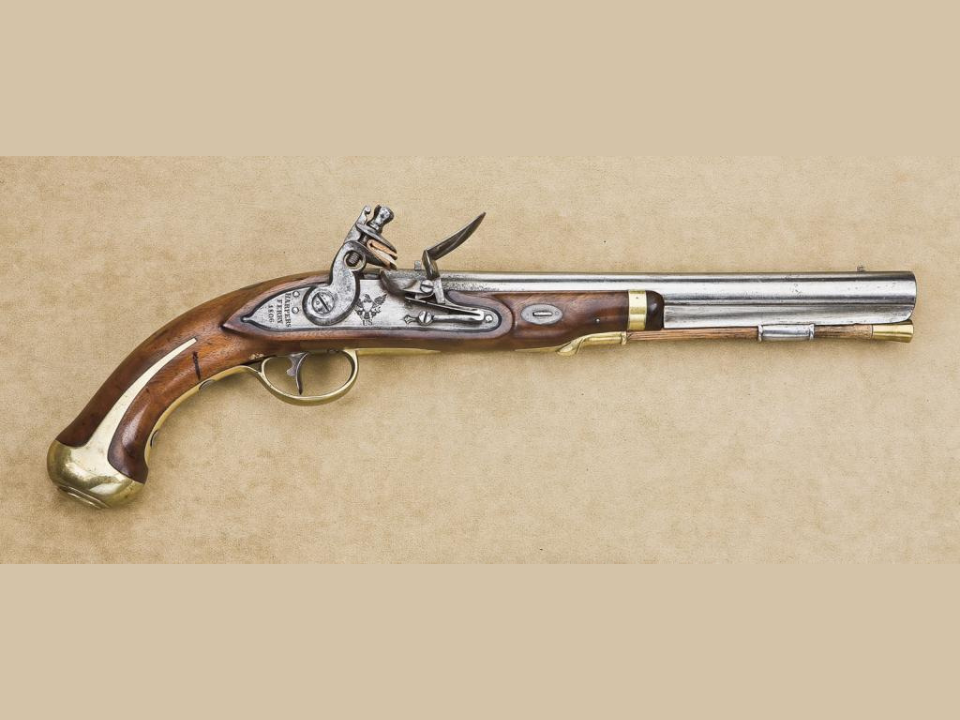
The Harper’s Ferry Model 1805 Flintlock Pistol was produced by the United States government in the early 19th century. It was designed as a standard-issue sidearm for the U.S. Army, particularly during the early years of the War of 1812. The pistol features a 0.54-inch caliber barrel and is known for its reliability and simplicity.
The Model 18’5 was the first U.S. flintlock pistol to be mass-produced and became a critical part of the early American military arsenal. It played a significant role in the development of U.S. military firearms and set the stage for later models, such as the Model 1816. Today, these pistols are valuable collector’s items due to their rarity and historical importance.
Estimated Market Value: $3,500
U.S. Model 1836 Flintlock Pistol
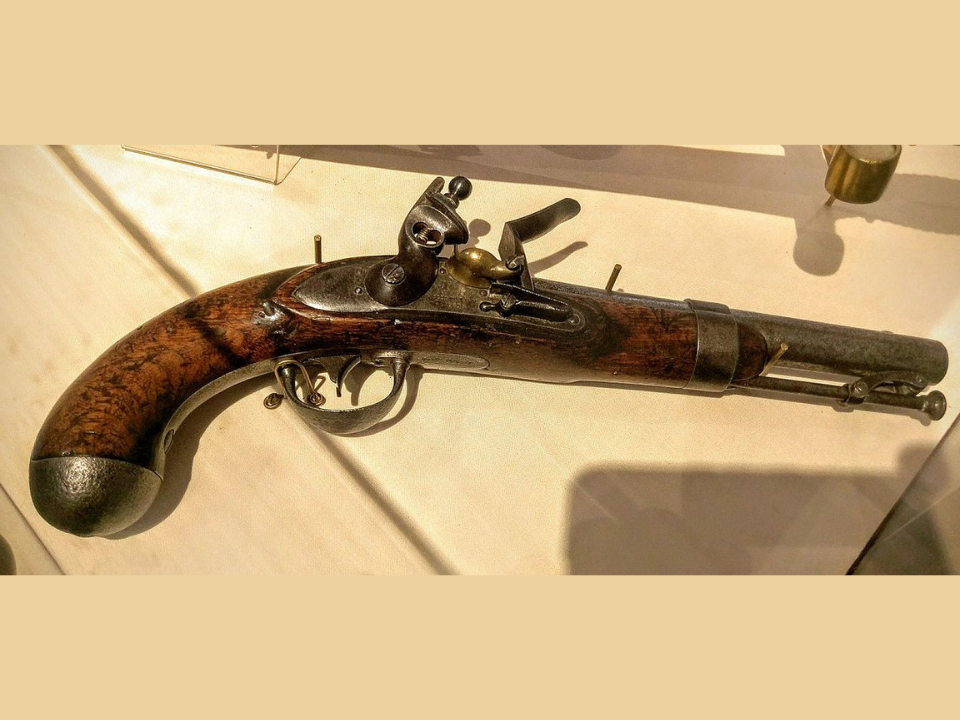
The U.S. Model 1836 Flintlock Pistol was the last flintlock pistol issued by the U.S. military before transitioning to percussion-cap systems. Produced at the Harper’s Ferry Arsenal, it was designed for use by both mounted and infantry soldiers. The Model 1836 features a 0.54-inch caliber barrel and a reliable flintlock mechanism.
Despite being replaced by newer designs, the Model 1836 played an important role in the early years of the United States’ military history. It was widely used during the Seminole Wars and the early stages of the Mexican-American War. The Model 1836 is highly collectible due to its historical significance and the transition from flintlock to percussion ignition systems.
Estimated Market Value: $2,800
This article originally appeared on Avocadu.
